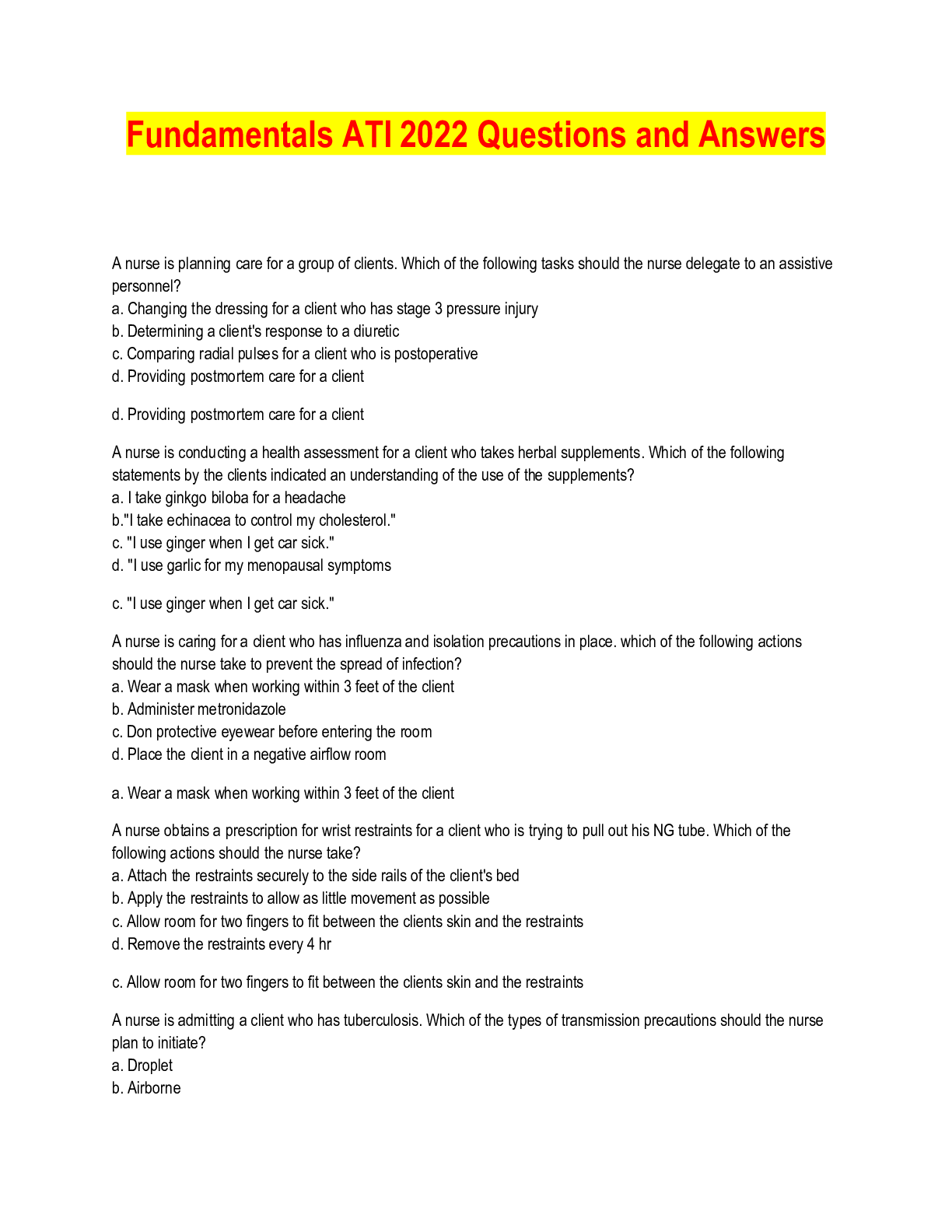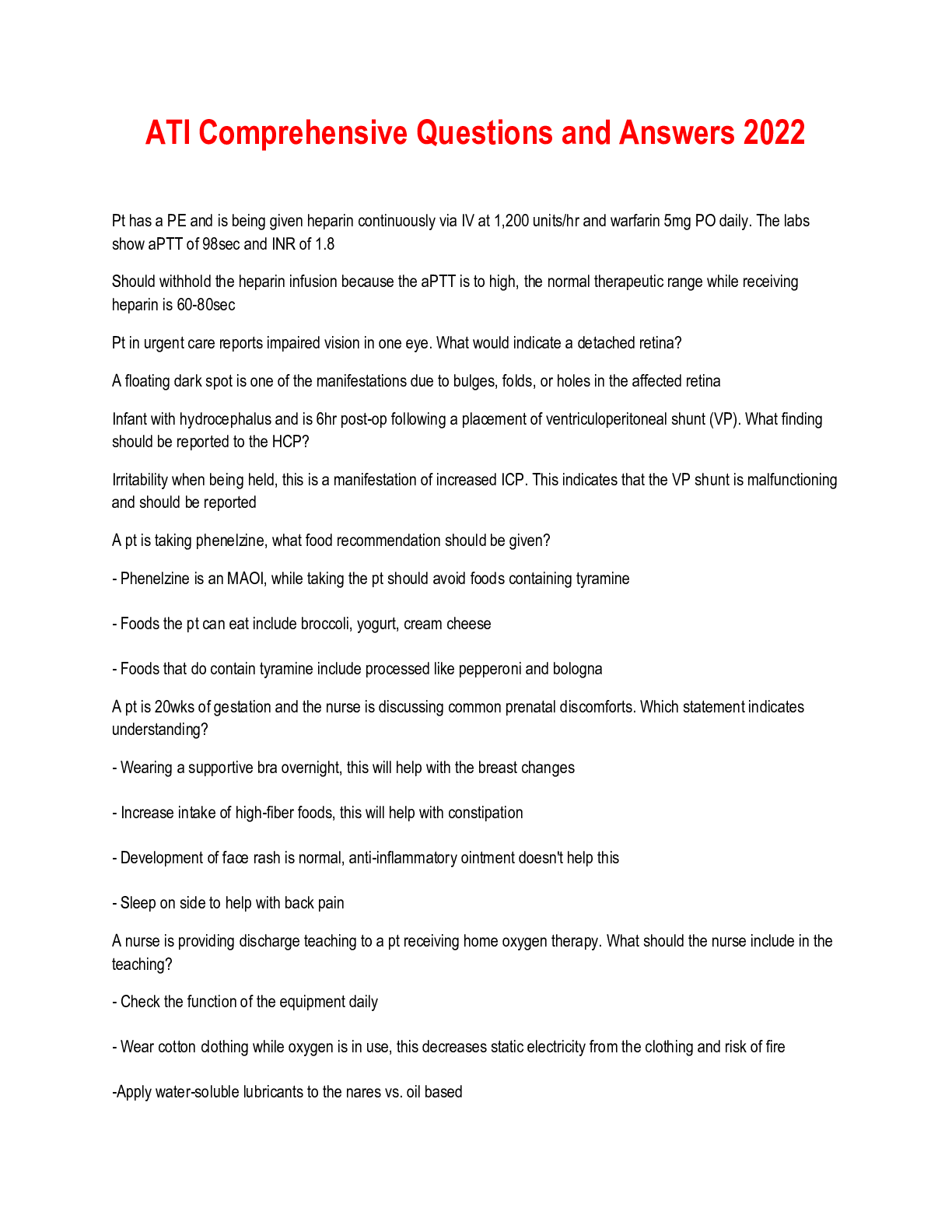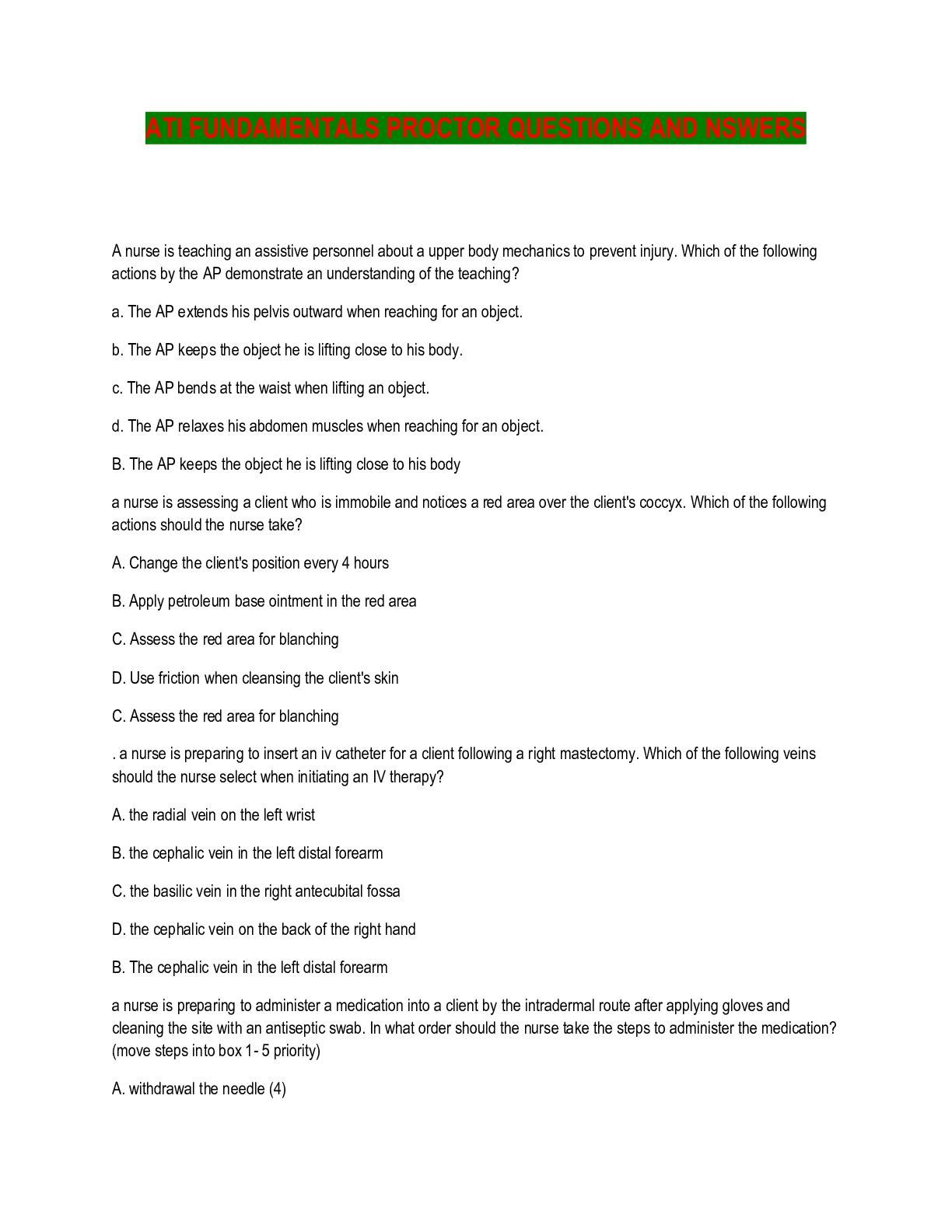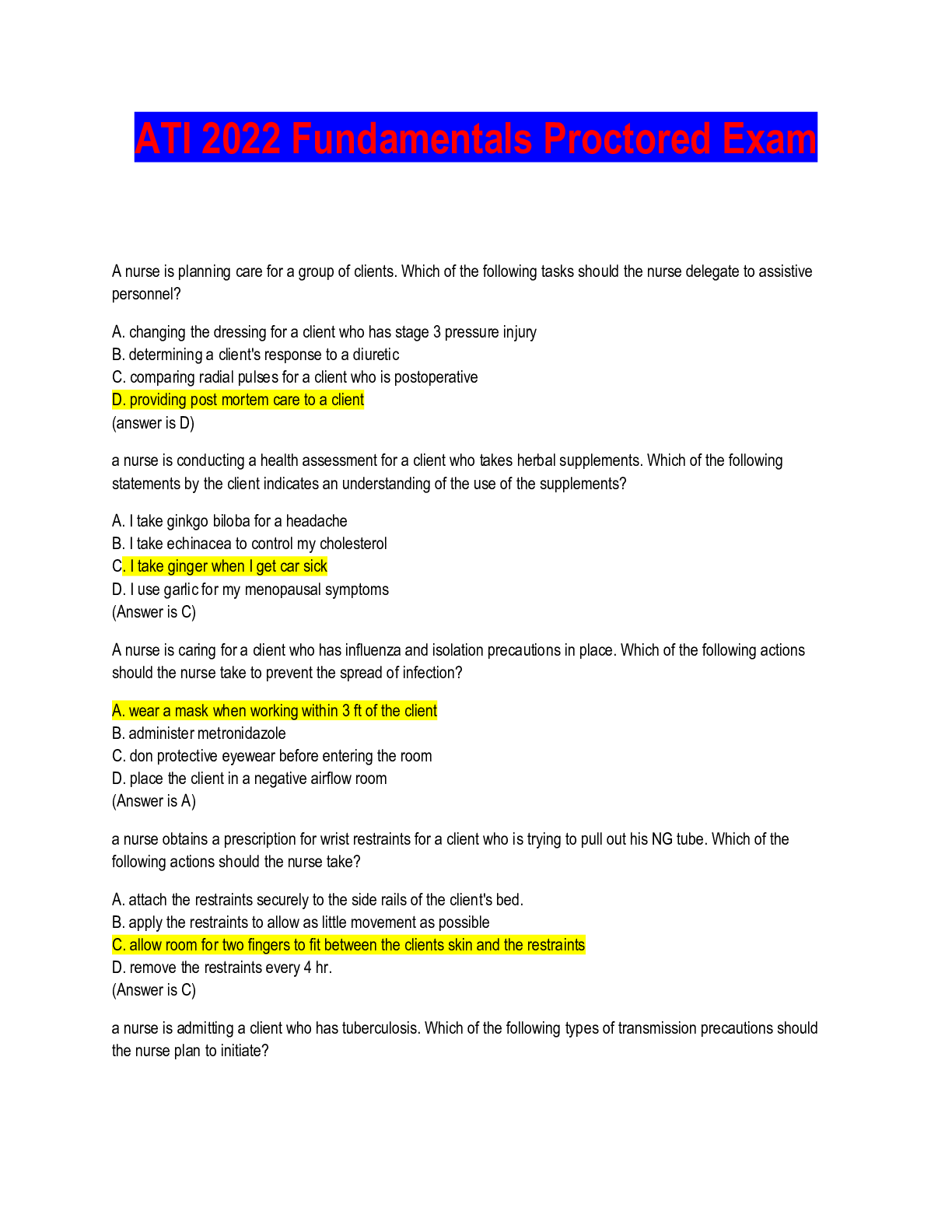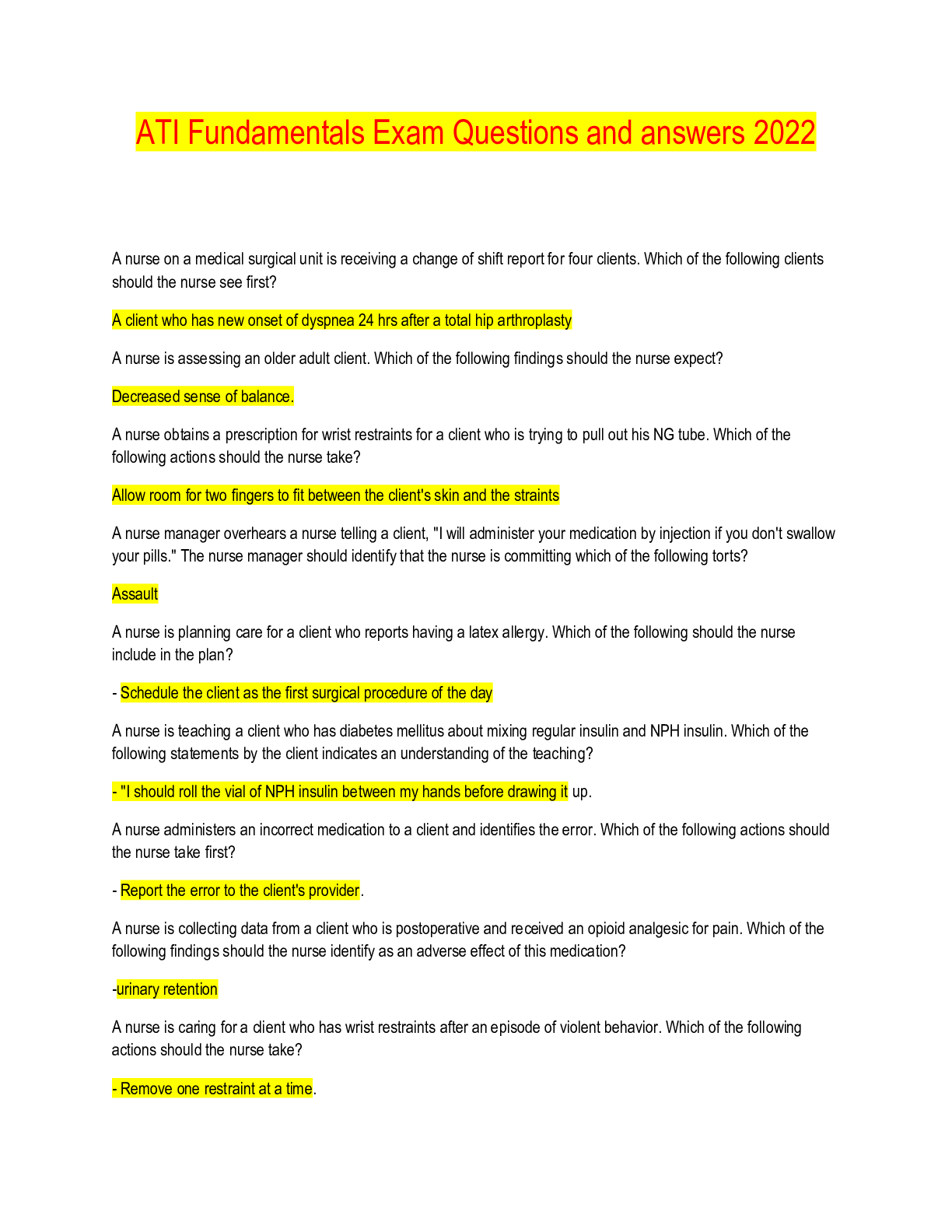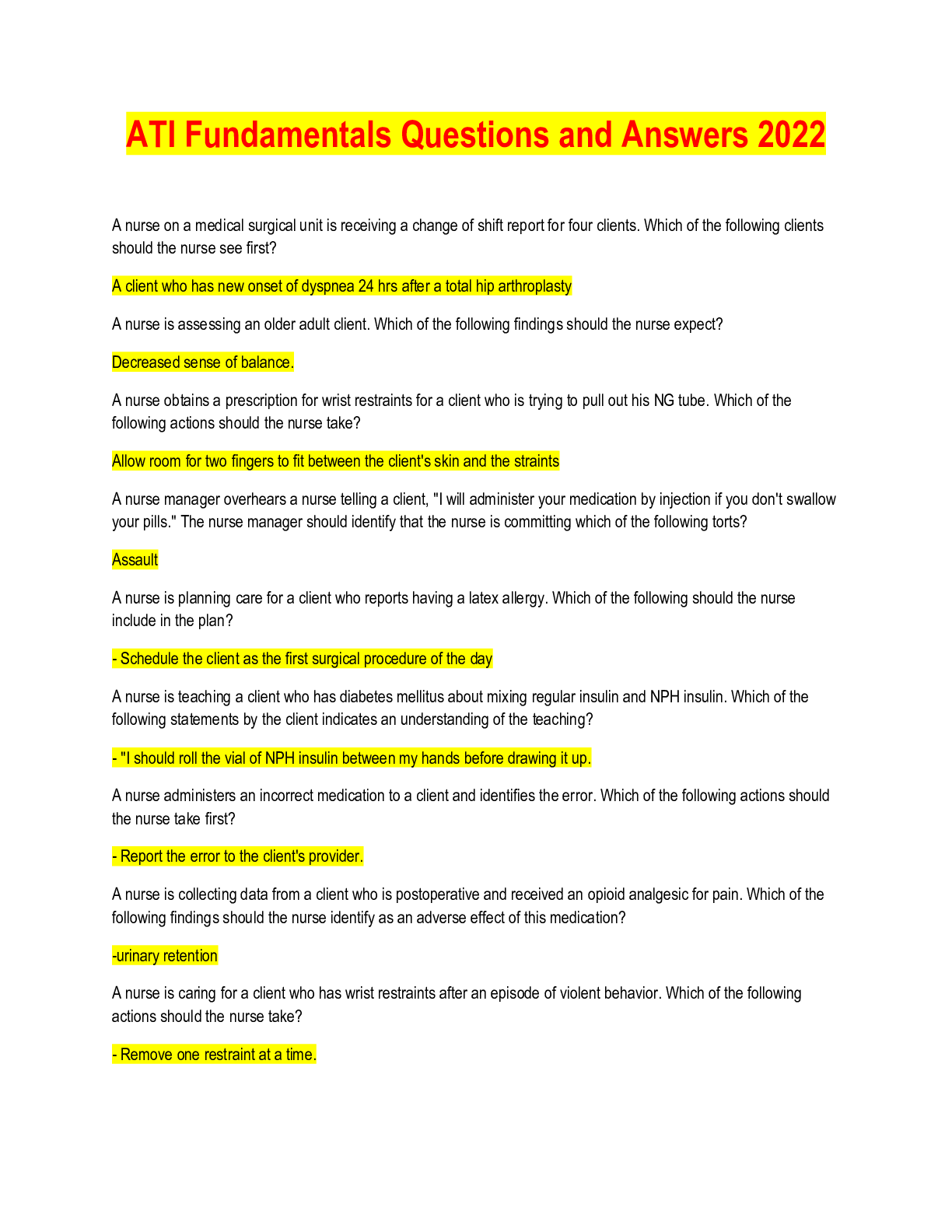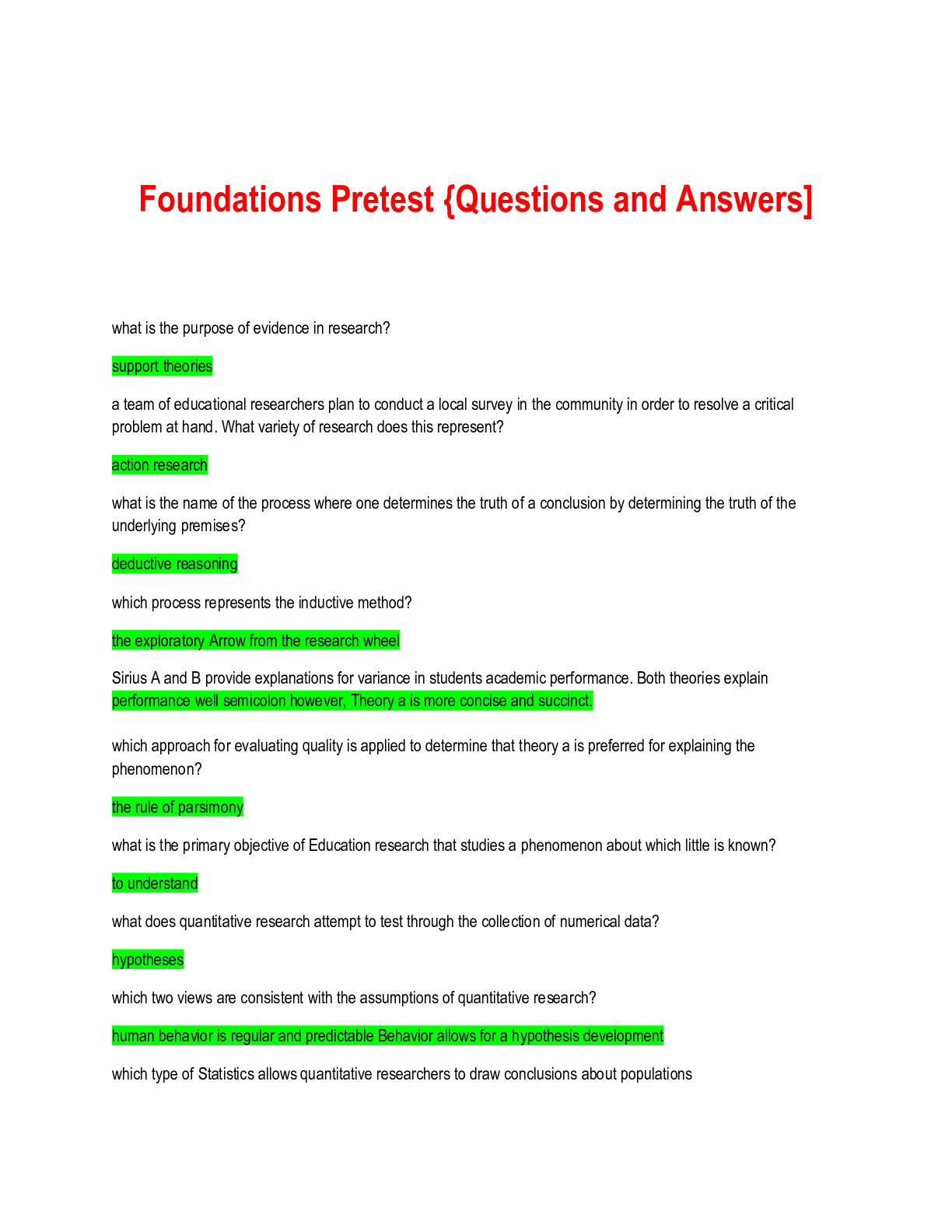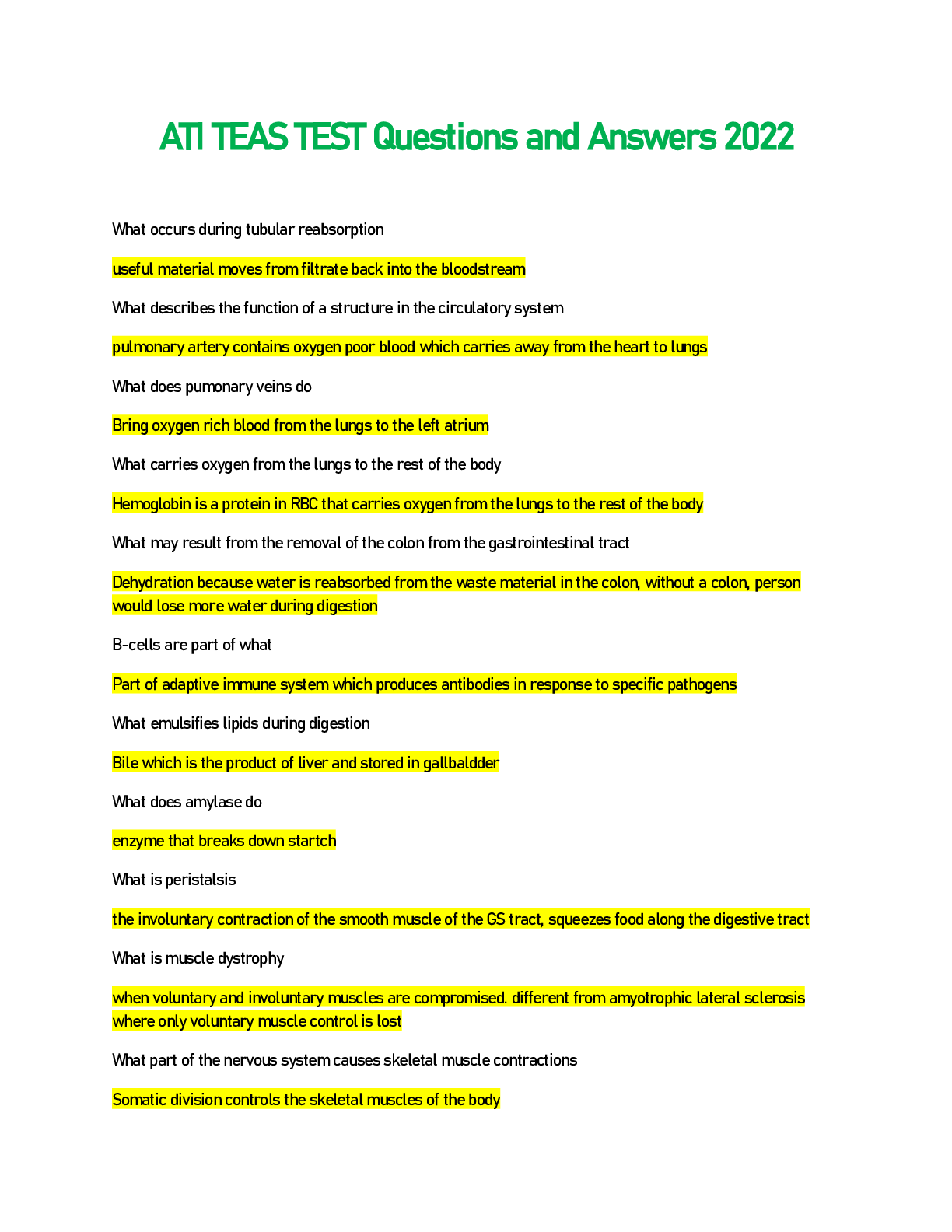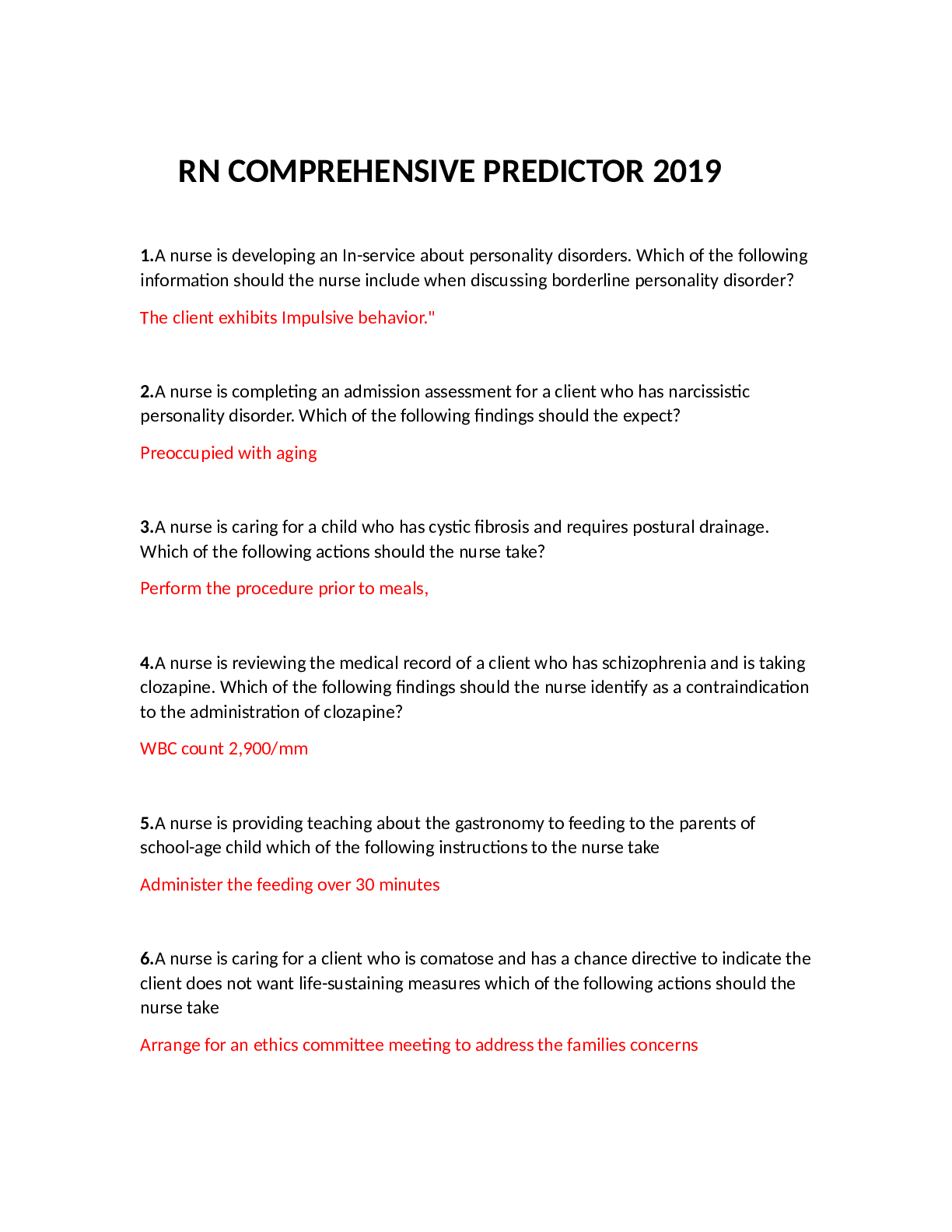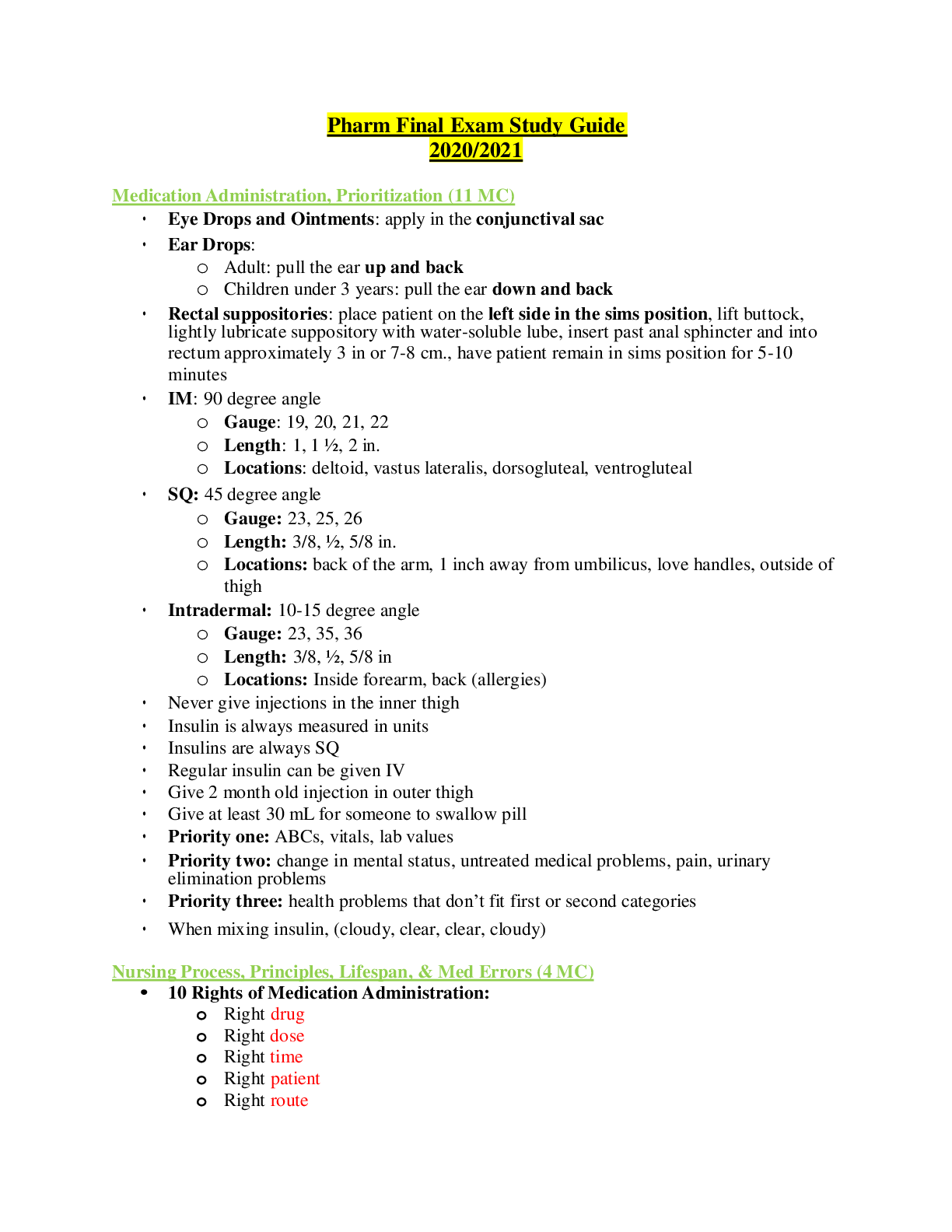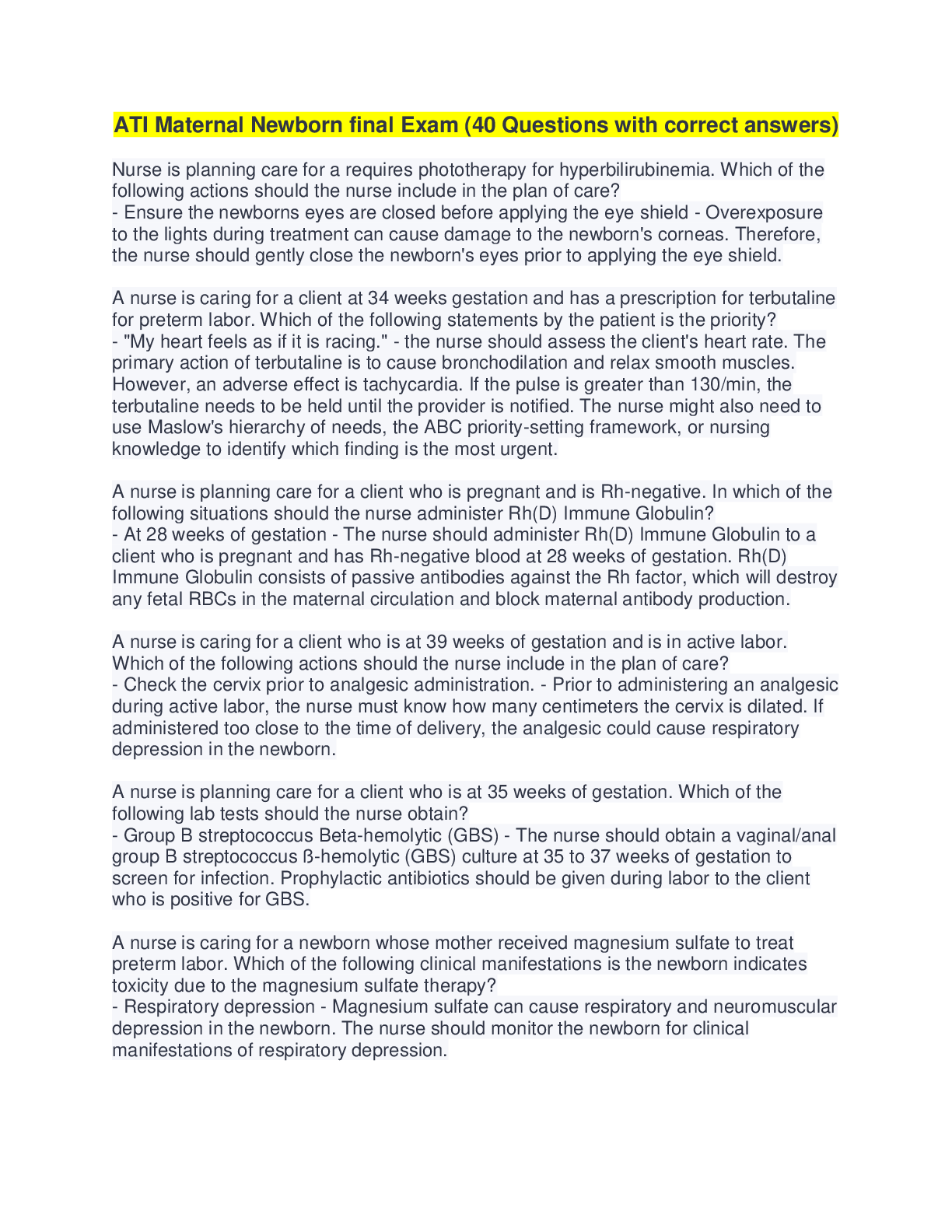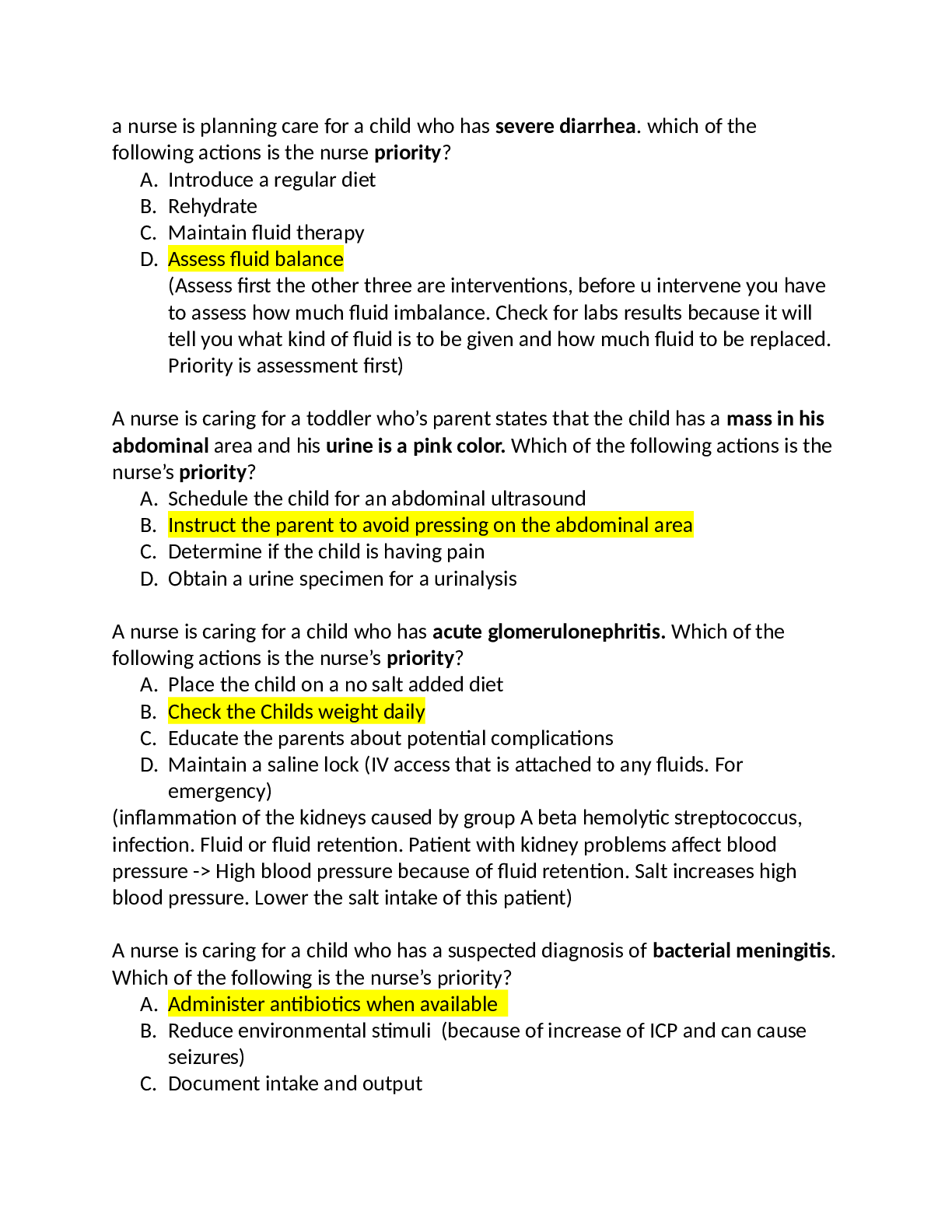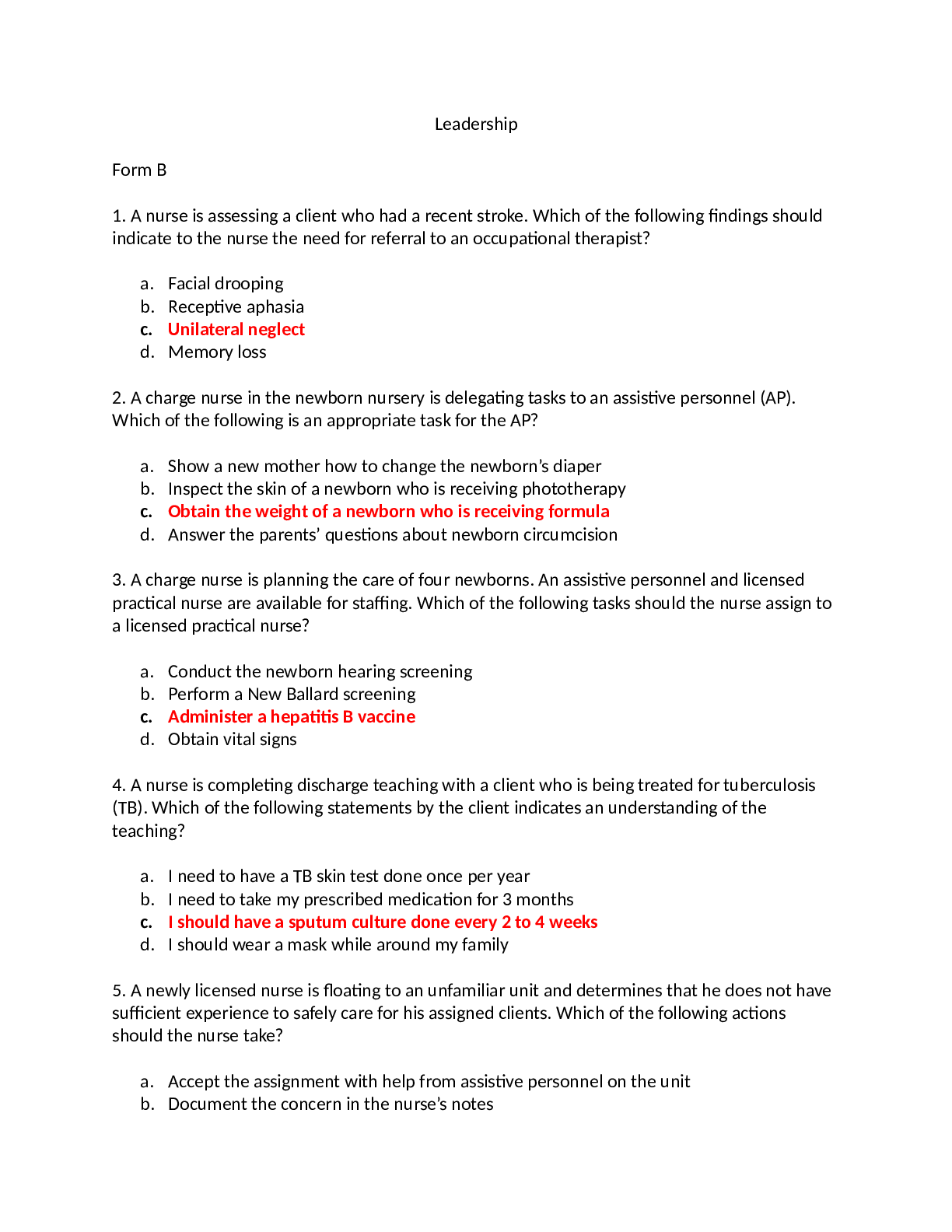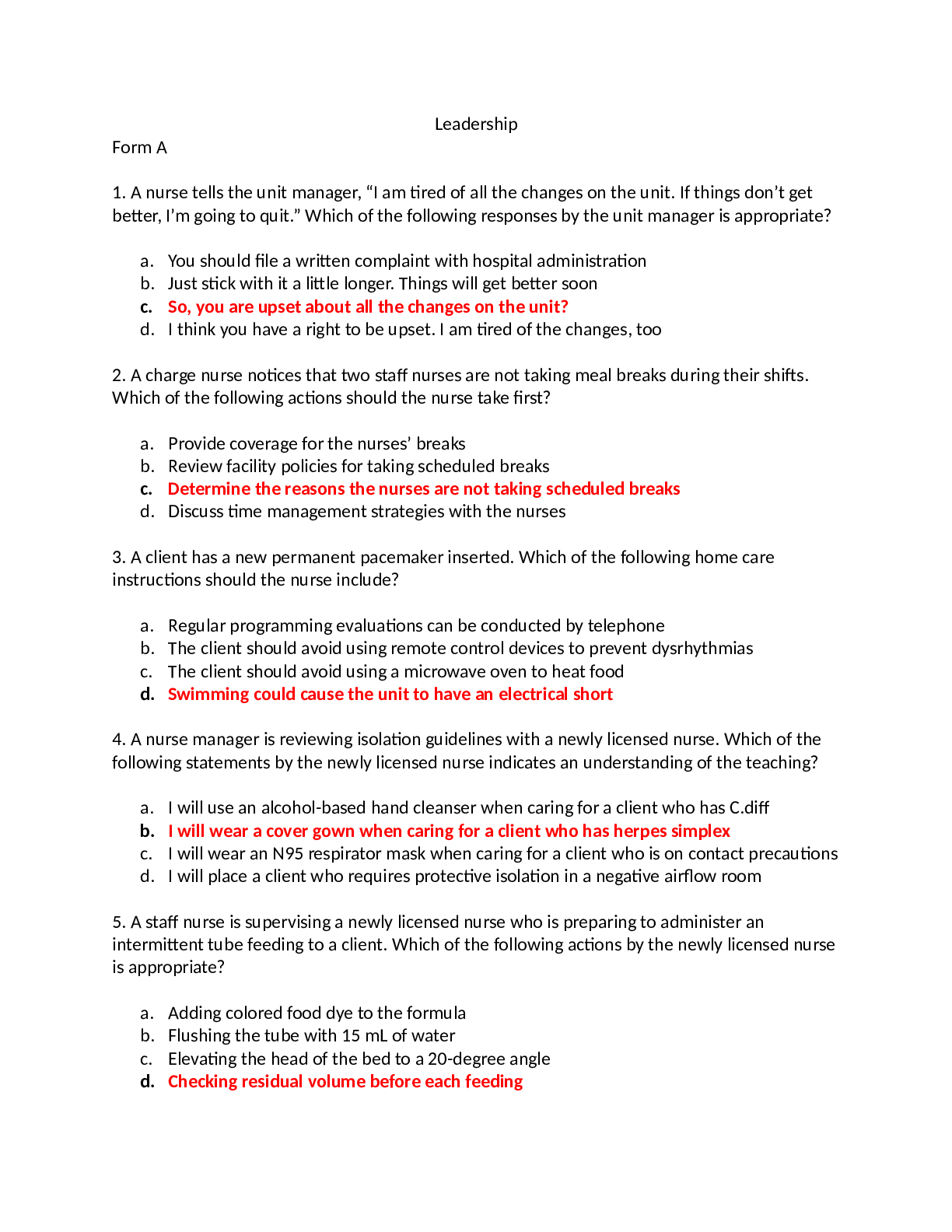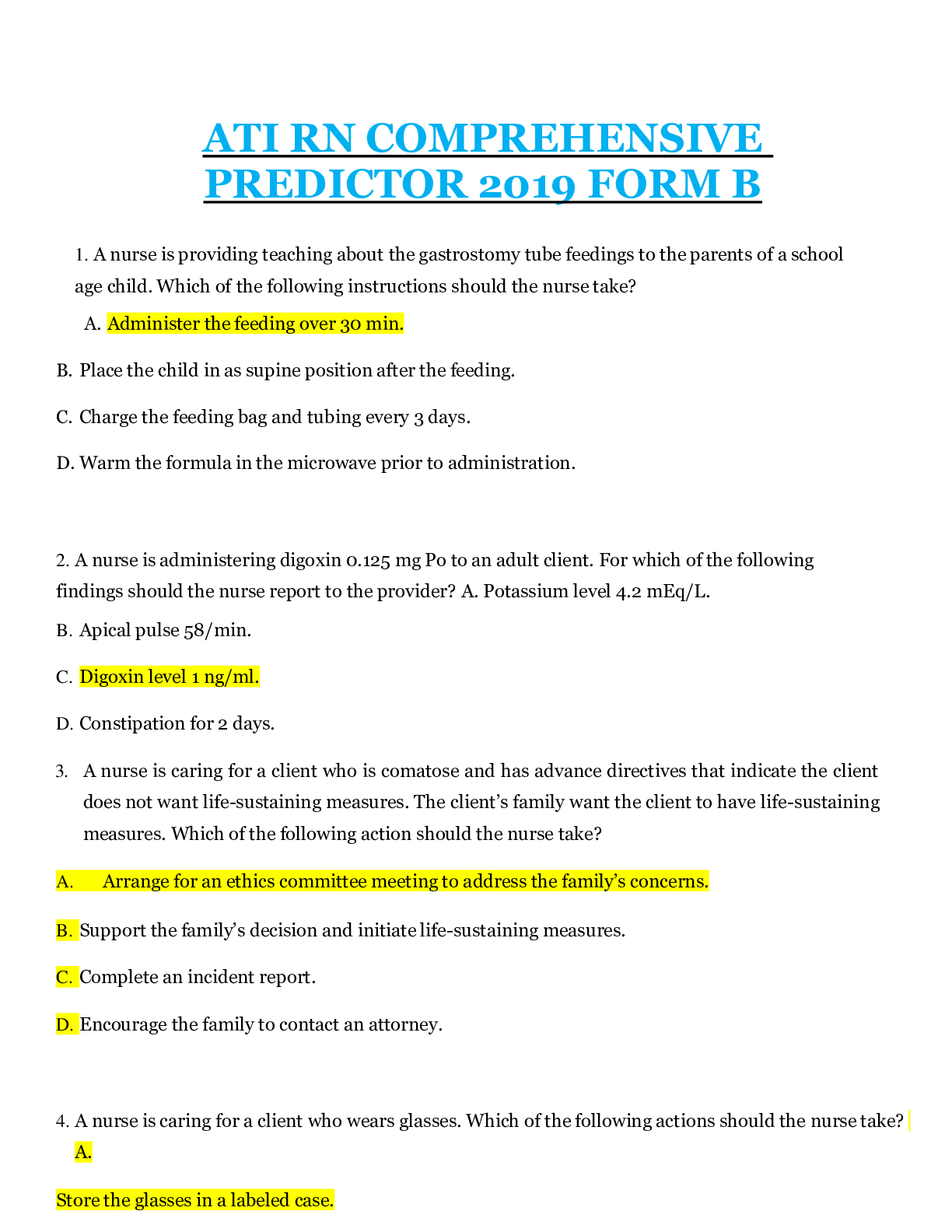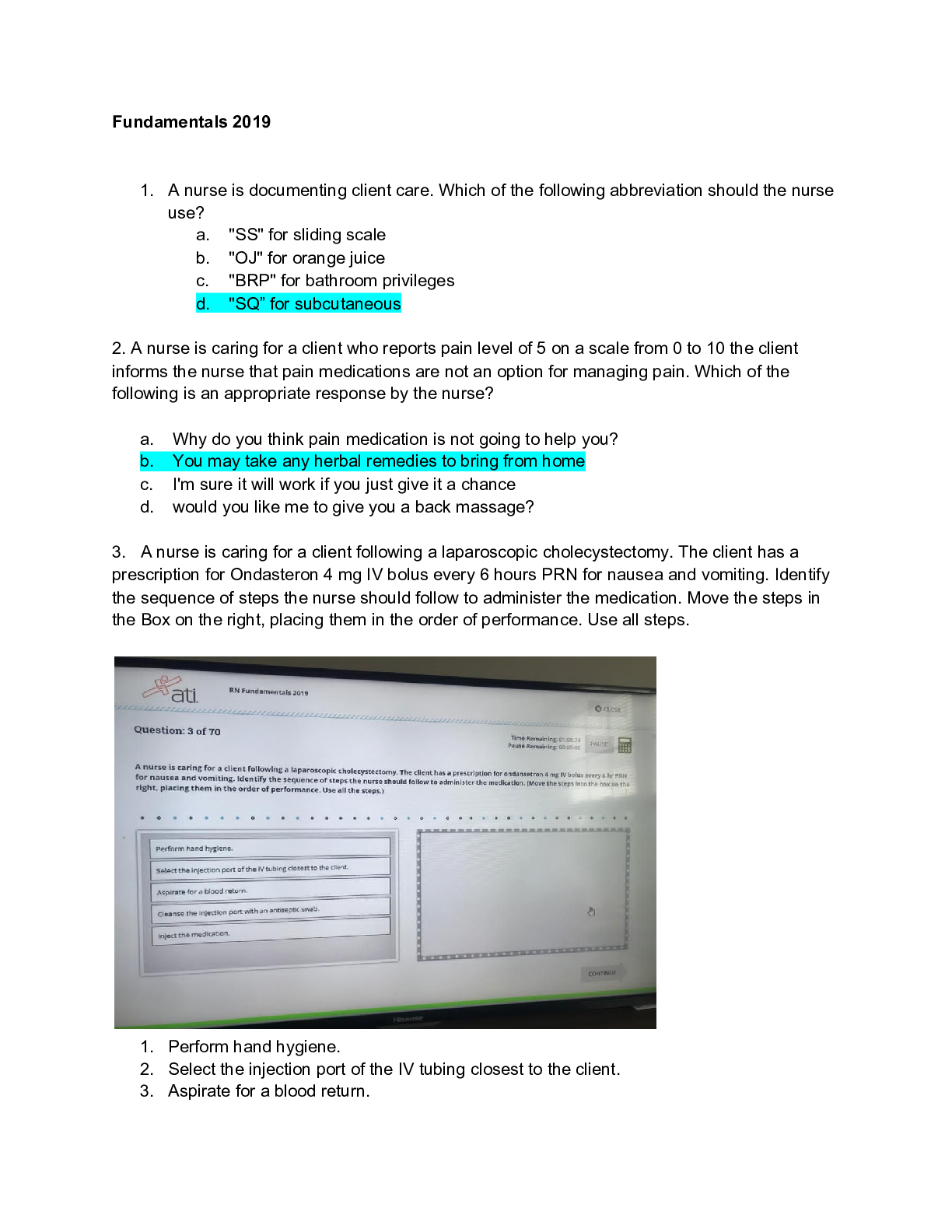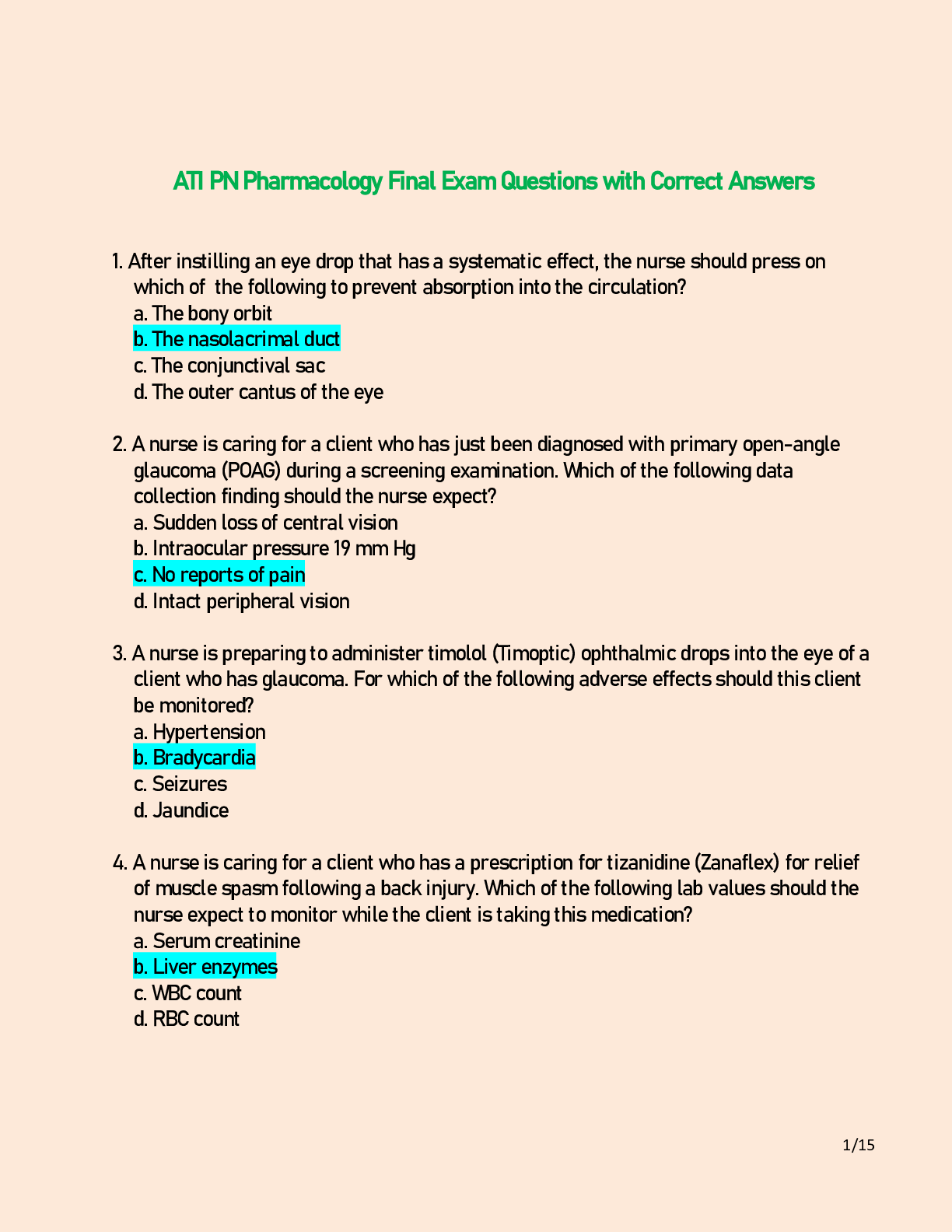Pharmacology > ATI > ATI PN Pharmacology Final Exam Questions with Correct Answers (All)
ATI PN Pharmacology Final Exam Questions with Correct Answers
Document Content and Description Below
ATI PN Pharmacology Final Exam Questions with Correct Answers 1. After instilling an eye drop that has a systematic effect, the nurse should press on which of the following to prevent absorption... into the circulation? a. The bony orbit b. The nasolacrimal duct c. The conjunctival sac d. The outer cantus of the eye 2. A nurse is caring for a client who has just been diagnosed with primary open-angle glaucoma (POAG) during a screening examination. Which of the following data collection finding should the nurse expect? a. Sudden loss of central vision b. Intraocular pressure 19 mm Hg c. No reports of pain d. Intact peripheral vision 3. A nurse is preparing to administer timolol (Timoptic) ophthalmic drops into the eye of a client who has glaucoma. For which of the following adverse effects should this client be monitored? a. Hypertension b. Bradycardia c. Seizures d. Jaundice 4. A nurse is caring for a client who has a prescription for tizanidine (Zanaflex) for relief of muscle spasm following a back injury. Which of the following lab values should the nurse expect to monitor while the client is taking this medication? a. Serum creatinine b. Liver enzymes c. WBC count d. RBC count 5. A nurse is reinforcing teaching to a client with asthma about how to use cromolyn (Intal). Which of the following should the nurse include in the teaching? (Select all that apply) a. Take the medication 15 min before exercising. b. Follow a fixed-dosage schedule for long-term control of asthma. c. Expect to lose weight while taking the medication. d. Observe for adverse effects such as tremors, restlessness, and palpitations. e. Do not crush or chew tablets. 6. A nurse is reinforcing teaching for a client with a prescription for a beclomethasone (QVAR) inhaler to be used for the long-term management of asthma. Which of the following dietary supplements should the client be sure to consume in sufficient amounts to prevent a deficiency while taking the QVAR inhaler? a. Iron and Protein b. Calcium and Vitamin D c. Vitamin B¹² and folic acid d. Vitamin E and K 7. A nurse is caring for a client who is prescribed oral prednisone (Deltasone) for the treatment of chronic asthma. The nurse should plan to monitor the client for which of the following findings? a. Weight loss b. Infection c. Hypoglycemia d. Angina Pain 8. A nurse is caring for a client who states she has been taking phenylephrine (Neo-Synephrine) nasal drops for the past 10 days for her upper respiratory symptoms. The nurse should plan to monitor the client for which of the following findings? a. Sedation b. Nasal congestion c. Productive cough d. Constipation 9. A nurse is caring for a preschool-age child who may have taken an overdose of diphenhydramine (Benadryl). To identify antihistamine toxicity, the nurse should plan to monitor the child for which of the following? a. Hallucinations b. Bradycardia c. Pinpoint pupils d. Pallor 10. A nurse is reinforcing teaching for a client who has hypertension and is prescribed hydrochlorothiazide (HydroDIURIL) twice daily. Which of the following instructions should the nurse include in the client’s teaching? a. “You should avoid foods high in potassium.” b. “Take the second dose of the day by early afternoon.” c. “Watch for ankle swelling that may appear late in the evening.” d. “Limit your daily fluid intake to 1½ L.” 11. A client has a new prescription for spironolactone (Aldactone). Which of the following laboratory values should the nurse recognize as a reason to withhold the morning dose of the medication and notify the provider? a. Serum sodium 138 mEq/L b. Serum potassium 5.2 mEq/L c. Serum creatinine 1.2 mEq/L d. Serum chloride 106 mEq/L 12. A nurse is caring for a client who is prescribed daily doses of both digoxin (Lanoxin) and furosemide (Lasix). The client’s potassium level is 3.2 mEq/L. For which of the following medication interaction is the client at risk? a. Toxic levels of furosemide b. Toxic levels of digoxin c. Sub-therapeutic levels of furosemide d. Sub-therapeutic levels of digoxin 13. Propranolol (Inderal) is contraindicated for a client who has which of the following conditions? a. Asthma b. Diabetes c. Angina d. Dementia 14. A nurse is reinforcing teaching for a client who has a prescription for verapamil (Calan). Which of the following statements by the clients indicates a need for further teaching? a. “I should increase the amount of fiber in my diet since the medication causes constipation.” b. “I should eliminate grapefruit juice from my diet while taking verapamil.” c. “I should decrease the amount of calcium in my diet while taking the medication.” d. I should take the medication with food if it causes an upset stomach.” [Show More]
Last updated: 1 year ago
Preview 1 out of 18 pages

Reviews( 0 )
Document information
Connected school, study & course
About the document
Uploaded On
Dec 02, 2022
Number of pages
18
Written in
Additional information
This document has been written for:
Uploaded
Dec 02, 2022
Downloads
0
Views
84

